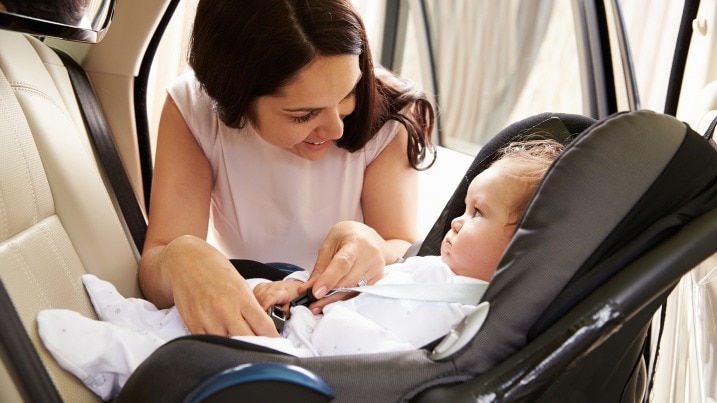Seatbelt placement: For installation of the car seat using the seatbelt (often required in the center seating position, where dedicated LATCH points are rare), take note of the placement and angle of the seatbelt hitches and receivers. Their positioning can greatly affect your ability to get a car seat tightly cinched down to the seat. And the only way to know if a particular seatbelt is going to be a problem is to try it out with your child's car seat — or seats.
The angle of the seatback cushion: All minivans, and many crossovers and SUVs, offer a recline feature for the second-row seats, allowing you to adjust the seatback to a position that helps you get a tight fit between a forward-facing safety seat and the car's seatback: a must for a safe installation. If you're going to buy a car that doesn't offer this feature, make sure that the angle of the seatback lets you get that tight fit between the back of the child seat and the car's seatback. The goal is to get the back of the car seat to sit flush against the seatback, which is ideal for a secure safety seat installation.
Ease of access: Wide door openings allow you to maneuver bulky car seats in and out of the car with a minimum of twisting and turning, which is great for installation. On a daily basis, they also make it easier to get your child in and out of the car, except in crowded parking lots, where a wide door can make it harder to avoid dinging the car next to yours. This is where the sliding doors of a minivan shine. Additionally, the few inches of extra ground clearance offered by minivans, car-based SUVs and tall wagons can reduce the back strain that parents experience when repeatedly bending over to place, buckle in and retrieve little ones.
Distance between the rear seats and front seats: If you have a very small child (i.e., infants) then you'll almost certainly need to install a rear-facing safety seat. Installing a seat this way takes up more space, so you'll want to look for a car that has plenty of rear legroom, or the distance from the rear seatback to the back of the front seats. Some carmakers also offer rear seats with fore-and-aft adjustment, allowing you to slide the seat back when you need to climb in to tend to a child and slide it forward when you need to make room for a double stroller in the cargo bay.
Availability of automatic locking retractor (ALR) seatbelts: Most newer cars have automatic locking retractor seatbelts in the backseat, so that when you pull the belt all the way out, it locks as it retracts. For proper installation with a seatbelt, some children's car seats require the use of ALR seatbelts. Other car-seat manufacturers use a special mechanism in the seat itself that locks only the lap portion of the belt. Either way, ALR seatbelts ensure a much tighter, safer fit for car seats.

